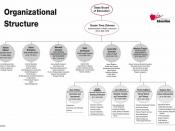"Leadership is practiced not so much in words as in attitude and in actions" (Harold S. Geneen). The importance of leadership in an organization should not be regarded lightly. According to Bateman and Snell, 2004, leaders may launch enterprises, build organization cultures, win wars, or otherwise change the course of events. In the following discussion, Black Tie Dining will thoroughly analyze different theories and styles of leadership. In doing so Black Tie Dining will be in a position to understand which theory or theories may be best applied to our organization and which style will create the most effective leadership. With the application of such theories and styles of leadership, it is also pertinent to discuss the possibility of the
advantages and disadvantages that may arise as well as the creation of an organizational culture.
When developing an organization from the ground up, it is important to establish leadership ideals right from the beginning.
One aspect of this includes establishing a theory and style of leadership which will best apply to one's organization. To do this, Black Tie Dining will consider a few different theories. According to Bateman and Snell, there are three traditional approaches to leadership: trait, behavioral, and situational. The first to consider is the trait approach. "It focuses on individual leaders and attempts to determine the personal characteristics (traits) that great leaders share" (Bateman & Snell, 2004). This proved to be a difficult task. While many leadership traits have been studied, none proved to be necessary for leadership success. It is now believed there are certain leadership "characteristics" which aid in the quality of leadership styles (Bateman & Snell, 2004). Some of these traits are drive, self-confidence, and knowledge of the business. The second approach to consider is the behavioral approach to leadership. This approach focuses on...



Education
Scholarly article on how do leaders practice situational/contingency model of leadership in an organization.
3 out of 3 people found this comment useful.